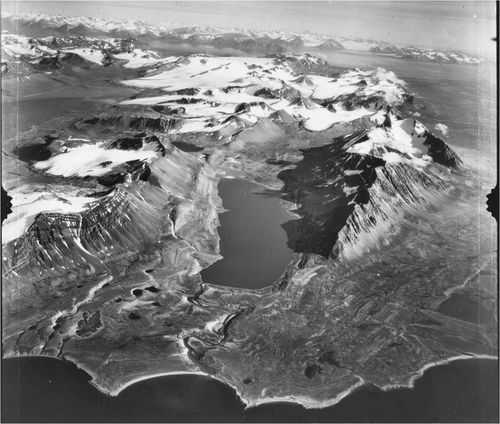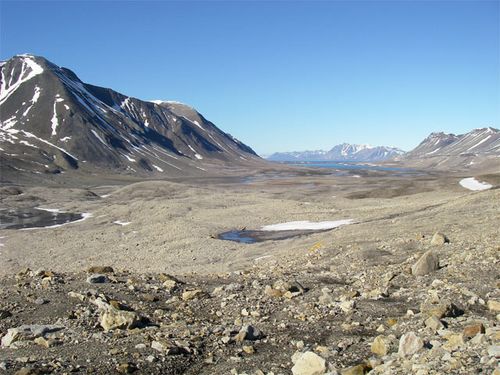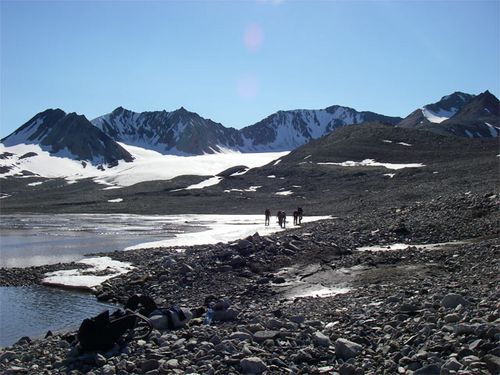In past journal entries I introduced the physical geography and some of the geologic past for this area. Today I want to introduce you to the recent geology of our study area and the detailed reason why we are here. I suggest going back to that tutorial on geologic time posted in a previous entry for a review of the concept of deep time.The focus of this entry is on the period of time known as the Quaternary Period, which includes the past over 2 million years (a small amount of years geologically speaking!). Keep in mind that Svalbard acquired its current shape by the end of the Tertiary period (time of coal formation), and that here the Quaternary Period is known for its repeated periods of glaciation that left behind all the beautiful glaciated features we see here at Kapp Linne.
The number of periods of glaciations during the Quaternary is not known, although one guess is about 30. The challenge in determining this value is that with each successive period of glaciation, comes massive amounts of erosion that wipes away the evidence of previous glaciers. The last major glacial cycle occurred between 115,000 and 10,000 yrs before the present when Svalbard may have gone through up to 3 periods of glaciations. During this time it is thought that the ice sheet grew out of the Barents Sea and extended over Svalbard. The ice filled the Linne Valley where we are working and extended out to Isfjord.
At about 10,000 yrs before the present after the last period of major glaciation and the Earth began to warm, the glaciers of Svalbard began to retreat, and sea level rose. With the rising sea levels terraces formed within the Linne Valley, and the valley was closed off from Isfjord. The evidence for these terraces is in the location of shells, driftwood, whalebones, and sediments in the Kapp Linne area.

The most recent period of glaciation occurred during the time period known globally as the Little Ice Age. The Little Ice Age exhibited numerous personalities around the globe from a non-existent event to one that peaked at a couple of different times during the 400-600 year duration, and the causes of this event are just as elusive as trying to pin down the exact years it occurred. But up here in Svalbard the Little Ice Age left behind a great deal of evidence that we see on a daily basis in the Linne Valley. Using the climate records that span back to the mid 1800's, it appears the Little Ice Age glaciers began to retreat when this region began to warm in the year 1915. We see all the classic features of glaciers left behind by this period such as cirques, end moraines, lateral moraines, fluvial deposits, talus slopes, periglacial features, and today Svalbard is 60% covered by glaciers. The students and scientists here have made it their task to research and understand how these glaciers, and you will read about their work in upcoming journal entries.


For additional information on the Little Ice Age, check out the History Channel program called the "Little Ice Age."
Question of the day: What is the difference between an alpine glacier and an ice sheet? What types of evidence are related to each of these types of glaciers?


Comments